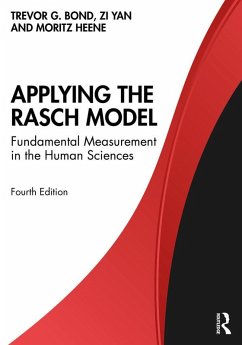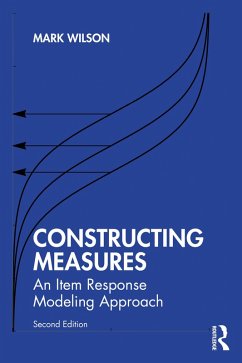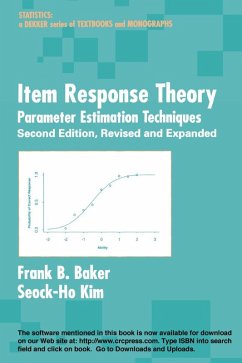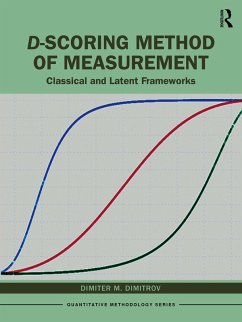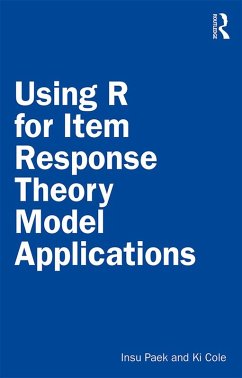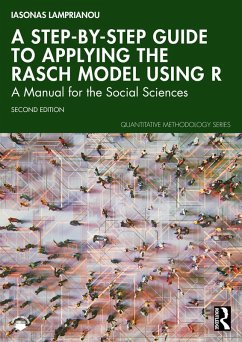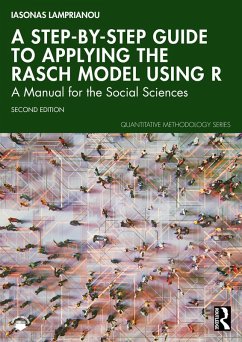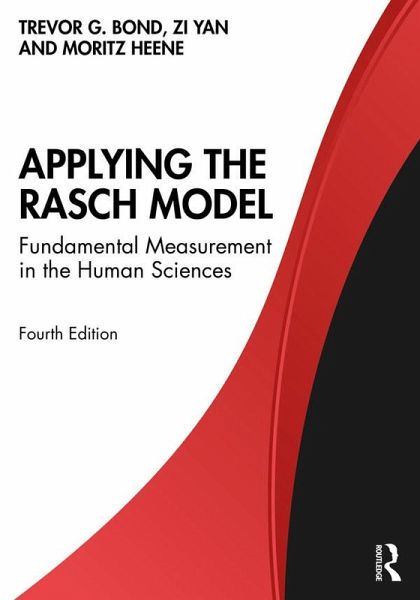
Applying the Rasch Model (eBook, ePUB)
Fundamental Measurement in the Human Sciences
Versandkostenfrei!
Sofort per Download lieferbar
48,95 €
inkl. MwSt.
Weitere Ausgaben:

PAYBACK Punkte
24 °P sammeln!
Recognised as the most influential publication in the field, ARM facilitates deep understanding of the Rasch model and its practical applications. The authors review the crucial properties of the model and demonstrate its use with examples across the human sciences. Readers will be able to understand and critically evaluate Rasch measurement research, perform their own Rasch analyses and interpret their results. The glossary and illustrations support that understanding, and the accessible approach means that it is ideal for readers without a mathematical background.Highlights of the new editio...
Recognised as the most influential publication in the field, ARM facilitates deep understanding of the Rasch model and its practical applications. The authors review the crucial properties of the model and demonstrate its use with examples across the human sciences. Readers will be able to understand and critically evaluate Rasch measurement research, perform their own Rasch analyses and interpret their results. The glossary and illustrations support that understanding, and the accessible approach means that it is ideal for readers without a mathematical background.
Highlights of the new edition include:
Intended as a text for graduate courses in measurement, item response theory, (advanced) research methods or quantitative analysis taught in psychology, education, human development, business, and other social and health sciences. Professionals in these areas will also appreciate the book's accessible introduction.
Highlights of the new edition include:
- More learning tools to strengthen readers' understanding including chapter introductions, boldfaced key terms, chapter summaries, activities and suggested readings.
- Greater emphasis on the use of R packages; readers can download the R code from the Routledge website.
- Explores the distinction between numerical values, quantity and units, to understand the measurement and the role of the Rasch logit scale (Chapter 4).
- A new four-option data set from the IASQ (Instrumental Attitude towards Self-assessment Questionnaire) for the Rating Scale Model (RSM) analysis exemplar (Chapter 6).
- Clarifies the relationship between Rasch measurement, path analysis and SEM, with a host of new examples of Rasch measurement applied across health sciences, education and psychology (Chapter 10).
Intended as a text for graduate courses in measurement, item response theory, (advanced) research methods or quantitative analysis taught in psychology, education, human development, business, and other social and health sciences. Professionals in these areas will also appreciate the book's accessible introduction.
Dieser Download kann aus rechtlichen Gründen nur mit Rechnungsadresse in A, B, BG, CY, CZ, D, DK, EW, E, FIN, F, GR, HR, H, IRL, I, LT, L, LR, M, NL, PL, P, R, S, SLO, SK ausgeliefert werden.




